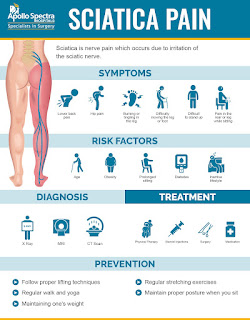Conquering Sciatica: Treatment and Prevention for Lasting Relief
Sciatica, that sharp, shooting pain radiating down the leg from the lower back, affects millions. It's a debilitating condition that significantly impacts quality of life, but thankfully, effective treatment and preventative measures exist. Understanding the root causes and implementing a proactive approach empowers individuals to manage sciatica and prevent future flare-ups. This article provides a comprehensive guide to tackling sciatica, focusing on both effective treatment options and crucial preventative strategies for long-term health.
Understanding Sciatica: Identifying the Culprit
Sciatica isn't a disease itself; it's a symptom. The pain arises from irritation or compression of the sciatic nerve, the longest nerve in the body, which runs from the lower back, through the hips and buttocks, and down each leg. This compression often stems from various sources, including:
- Herniated disc: A bulging or ruptured disc in the spine can press on the sciatic nerve.
- Spinal stenosis: Narrowing of the spinal canal puts pressure on the nerve.
- Spondylolisthesis: A vertebra slips forward, potentially compressing the nerve.
- Piriformis syndrome: The piriformis muscle, located near the sciatic nerve, can spasm and compress it.
- Sacroiliac joint dysfunction: Problems with the sacroiliac joint, connecting the spine to the pelvis, can radiate pain along the sciatic nerve pathway.
Accurate diagnosis is crucial. A thorough physical examination and imaging studies (like X-rays, MRIs, or CT scans) help pinpoint the underlying cause, guiding the most effective treatment strategy.
Effective Sciatica Treatment Strategies: Finding Relief
Conservative Management: The First Line of Defense
For many, conservative treatments successfully alleviate sciatica symptoms. These methods often include:
- Over-the-counter pain relievers: Nonsteroidal anti-inflammatory drugs (NSAIDs) like ibuprofen or naproxen reduce pain and inflammation.
- Physical therapy: A customized exercise program strengthens core muscles, improves flexibility, and corrects postural imbalances, reducing pressure on the nerve.
- Heat and ice therapy: Applying heat or ice packs provides temporary pain relief, depending on the type of pain experienced.
- Rest and activity modification: Avoiding activities that exacerbate pain while gradually increasing activity levels as tolerated is crucial.
- Injections: Corticosteroid injections can reduce inflammation around the nerve, offering temporary pain relief. Epidural steroid injections are a common example.
These conservative approaches often provide significant relief, enabling individuals to return to their normal activities.
Surgical Intervention: When Necessary
If conservative treatments fail to provide relief after a reasonable period, surgery might be considered. Surgical options aim to alleviate nerve compression through procedures such as:
- Discectomy: Removing part or all of a herniated disc.
- Laminectomy: Removing a portion of the lamina (part of the vertebra) to widen the spinal canal.
- Spinal fusion: Fusing two or more vertebrae together to stabilize the spine.
Surgical intervention is usually reserved for severe cases where significant nerve damage is present or conservative treatments have proven ineffective. The decision to pursue surgery involves careful consideration of potential risks and benefits.
Preventing Sciatica: A Proactive Approach
Prevention plays a crucial role in minimizing the risk of sciatica or preventing future episodes. Implementing these strategies promotes long-term spinal health:
- Maintain a healthy weight: Excess weight puts extra strain on the spine.
- Engage in regular exercise: Focus on exercises that strengthen core muscles and improve flexibility, such as yoga, Pilates, and swimming.
- Practice good posture: Maintaining proper posture while sitting, standing, and lifting reduces strain on the back.
- Lift objects correctly: Bend at the knees, keep your back straight, and lift close to your body.
- Quit smoking: Smoking negatively affects blood circulation, hindering the healing process.
- Manage stress: Chronic stress can exacerbate back pain.
By proactively addressing these factors, individuals can significantly reduce their risk of developing sciatica and maintain a healthy, active lifestyle.
Disclaimer: This information is for general knowledge and does not constitute medical advice. Consult a healthcare professional for diagnosis and treatment of sciatica.











